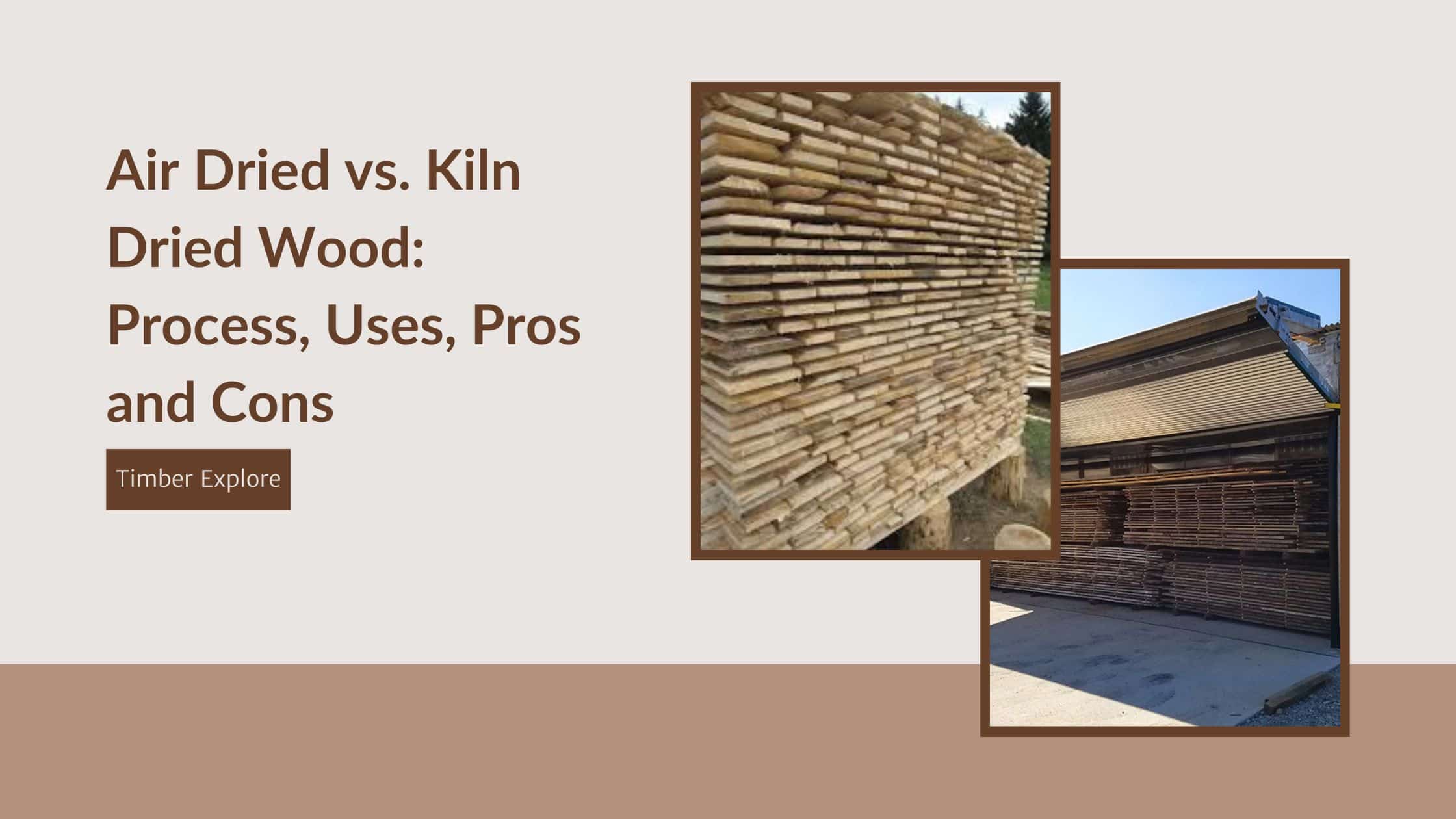The drying process of wood plays a pivotal role in determining its quality and suitability for various applications. Air drying and kiln drying are the two primary methods used to remove moisture from wood, each with its advantages and characteristics. Whether you’re crafting fine furniture or building a durable structure, understanding these drying techniques is essential. Exploring the differences between air-dried and kiln-dried wood will equip you with the knowledge to choose the best material for your specific project needs.
What is Air-Dried Lumber?
Air-dried lumber is exactly what it sounds like wood that has been dried naturally by exposing it to air. This method involves stacking lumber in a well-ventilated area, often outdoors, and allowing it to dry over time. The process can take several months to over a year, depending on the wood and environmental conditions.
Advantages of Air-Dried Wood:
- Cost-Effective: Since no special equipment is needed, air drying is generally less expensive than kiln drying.
- Natural Process: The natural drying process often results in fewer internal stresses, which can reduce the risk of warping and splitting.
- Sustainable: Air drying consumes no energy apart from the initial setup and periodic monitoring.
Disadvantages of Air-Dried Wood:
- Time-Consuming: The drying process is slow, taking months or even years.
- Weather Dependent: The process is subject to environmental conditions, which can be unpredictable.
- Moisture Content: Achieving a very low moisture content is difficult, often resulting in lumber that is less suitable for indoor use where stable humidity levels are needed.
What is Kiln-Dried Lumber?
Kiln-dried lumber is dried in a controlled environment using a kiln. This method uses heat and sometimes steam to quickly reduce the moisture content of the wood. Kilns can be powered by electricity, gas, or even solar energy.
Advantages of Kiln-Dried Wood:
- Speed: The drying process is significantly faster, often taking just a few days to a few weeks.
- Controlled Environment: Kilns offer precise control over temperature and humidity, resulting in wood with a consistent moisture content.
- Lower Moisture Content: Kiln drying can achieve lower moisture levels, making the wood more stable for indoor environments.
Disadvantages of Kiln-Dried Wood:
- Cost: The equipment and energy required makes this method more expensive.
- Environmental Impact: Kiln drying consumes more energy and has a higher carbon footprint compared to air drying.
- Potential for Damage: The rapid drying process can create internal stresses, leading to warping or splitting if not done correctly.
Air Dried vs. Kiln Dried Wood: The Drying Processes
Air-Drying Process:
- Stacking: Lumber is stacked in a well-ventilated area, with spacers (stickers) placed between layers to allow air circulation.
- Protection: The stacks are often covered to protect them from direct sunlight and rain while still allowing air flow.
- Time: The wood is left to dry for several months to a few years, depending on the type and thickness of the wood.
- Monitoring: Regular checks are performed to monitor the moisture content and ensure even drying.
Kiln-Drying Process:
- Loading: Lumber is loaded into a kiln, which is a large, insulated chamber.
- Heating: The kiln is heated to a specific temperature, and humidity is controlled to ensure even drying.
- Timing: The drying time is much shorter, typically ranging from a few days to a few weeks.
- Control: Moisture content is closely monitored and adjusted to achieve the desired level.
Air Dried vs. Kiln Dried Wood: A Brief Comparison
| Aspect | Air-Dried Wood | Kiln-Dried Wood |
|---|---|---|
| Moisture Content | Higher (12-20%) | Lower (6-8%) |
| Stability | More dimensionally stable | Can be prone to warping and splitting |
| Cost | Generally cheaper | More expensive due to equipment and energy costs |
| Drying Time | Several months to years | Few days to a few weeks |
| Environmental Impact | Low, uses natural processes | Higher, consumes more energy |
| Availability | Harder to find for certain wood types | Widely available in consistent quality |
| Ideal Uses | Outdoor projects, rustic furniture, artisanal projects | Indoor furniture, cabinetry, flooring, fine woodworking |
Ideal Uses
Air-Dried Wood:
- Ideal for outdoor projects such as decks, fences, and garden furniture.
- Suitable for rustic furniture where slight variations in moisture content are acceptable.
- Great for artisanal projects where natural drying processes are preferred.
Kiln-Dried Wood:
- Perfect for indoor furniture, cabinetry, and flooring due to its lower moisture content.
- Ideal for fine woodworking projects that require precision and stability.
- Suitable for construction materials in controlled environments.
Air Dried vs. Kiln Dried Wood: Which is Better?
Both air-dried and kiln-dried wood have their place in woodworking and construction. Your choice depends on your project’s requirements, budget, and environmental considerations. Air-dried wood is cost-effective and eco-friendly but requires patience and may not achieve the low moisture levels needed for indoor use. Kiln-dried wood offers speed and precision at a higher cost and environmental impact. By understanding the differences, you can select the right type of wood to ensure the success and longevity of your project.
For more detailed guides on woodworking and sustainable practices, keep following Timber Explore. Feel free to leave comments and share your experiences with air-dried and kiln-dried wood!

